
Wir reisen, also sind wir
vakantio.de/wirreisenalsosindwir
Costa Rica: Los Quetzales National Park
Naipablaak: 15.06.2018
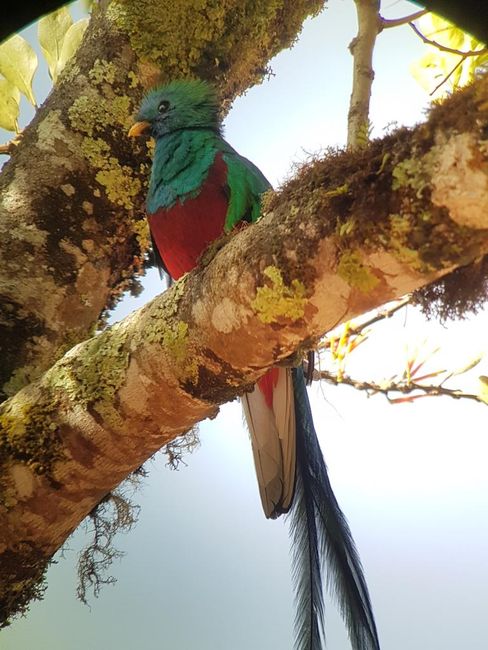
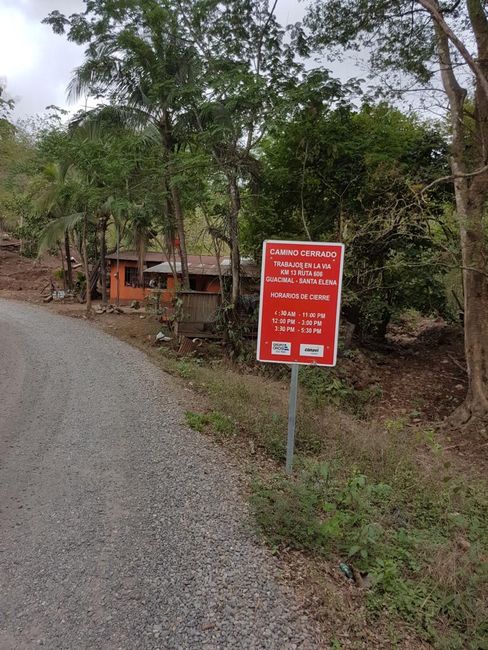
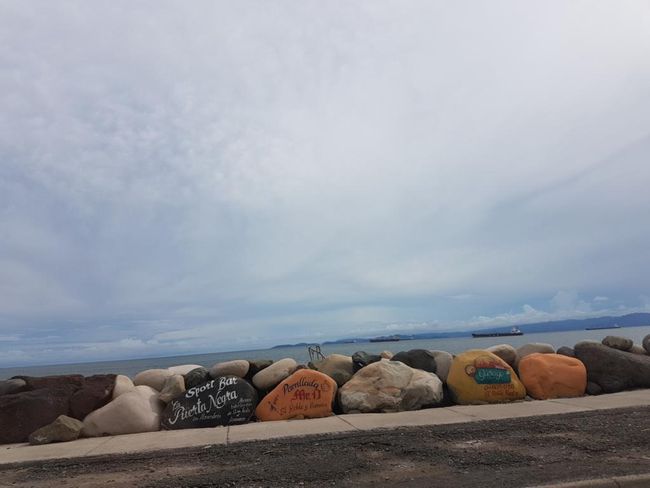
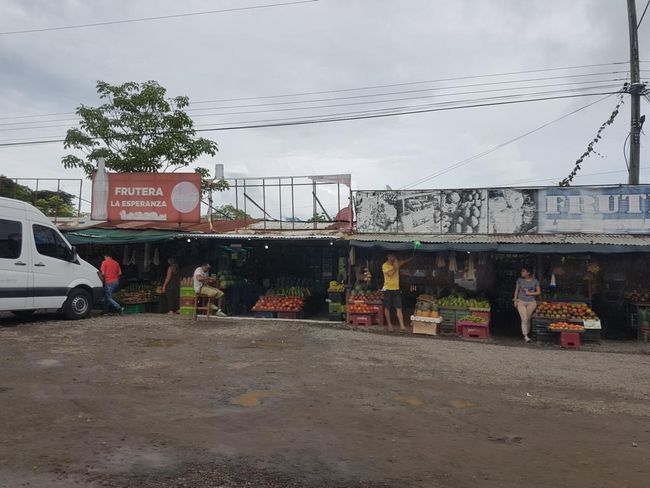
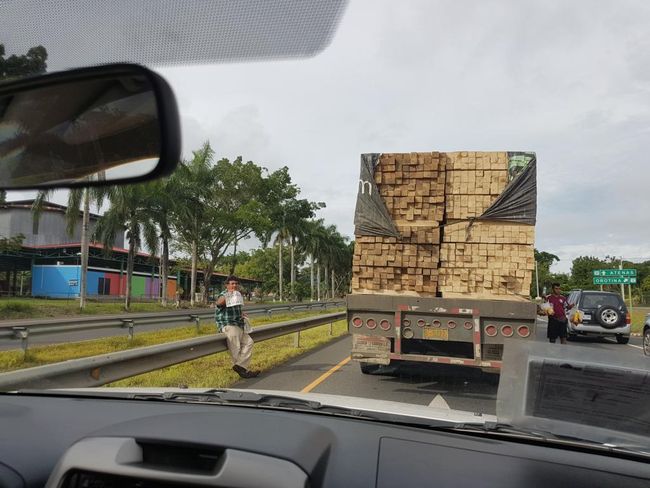
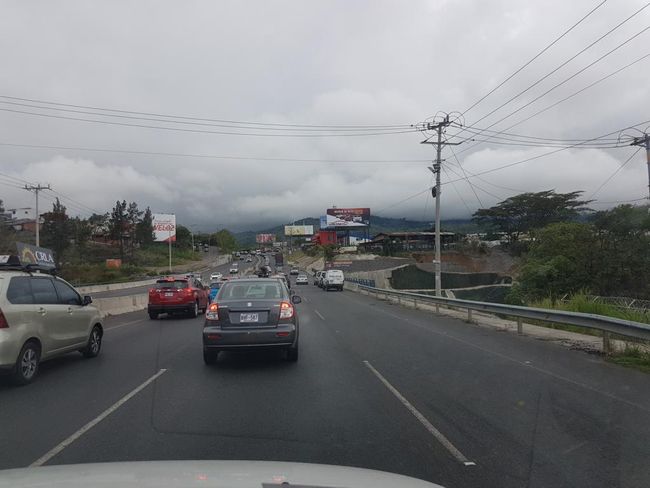
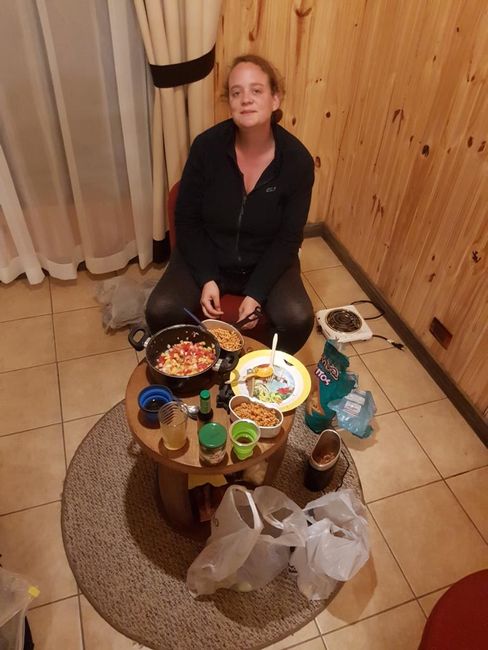
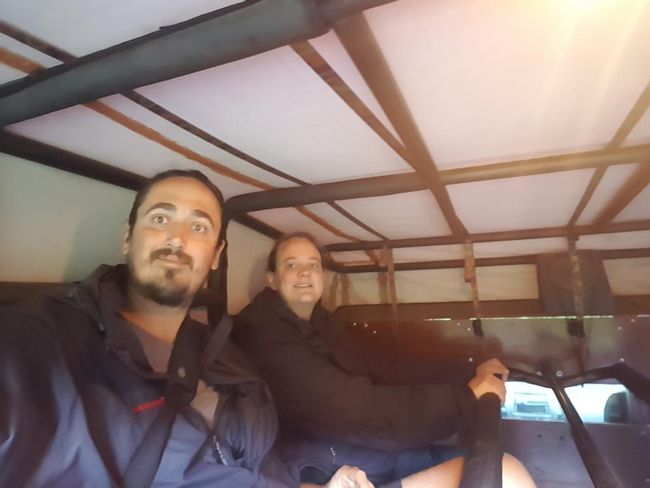
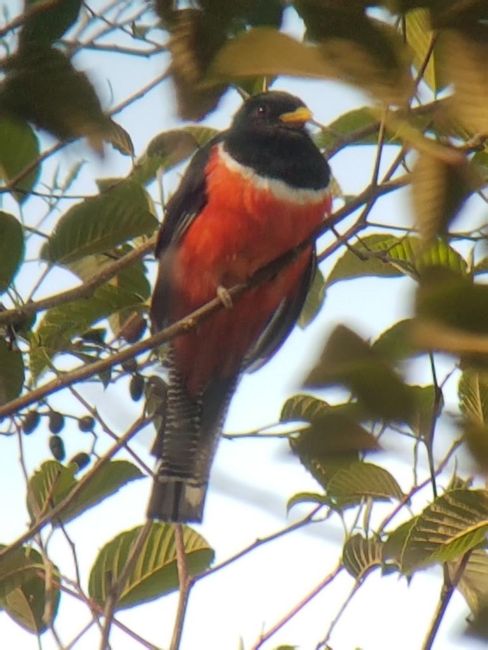
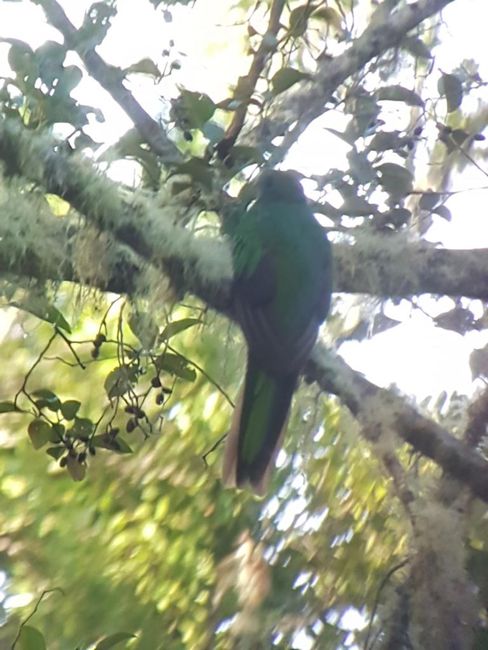
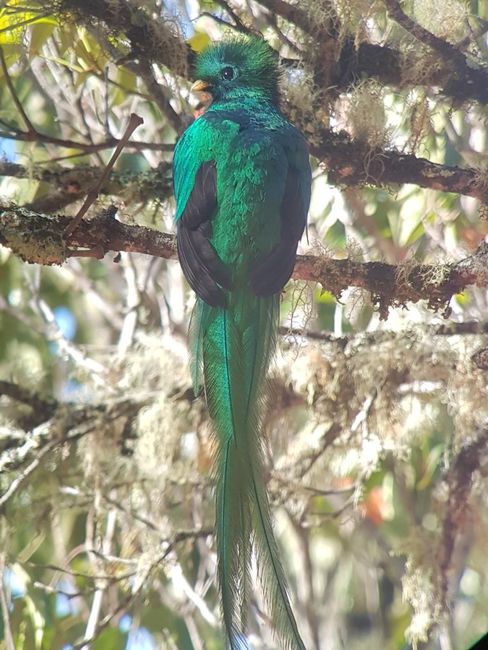
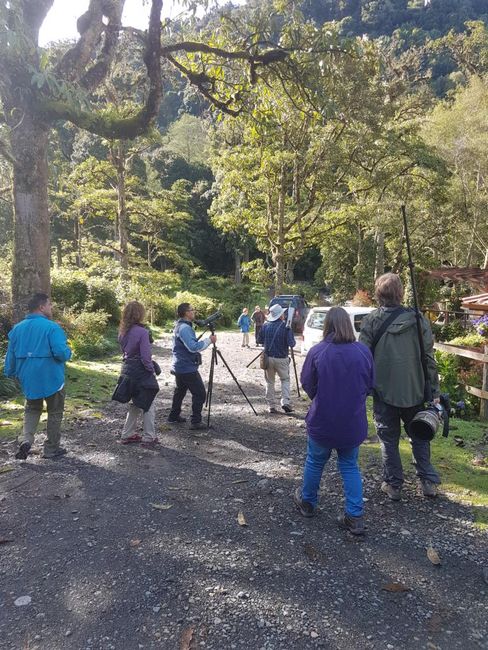
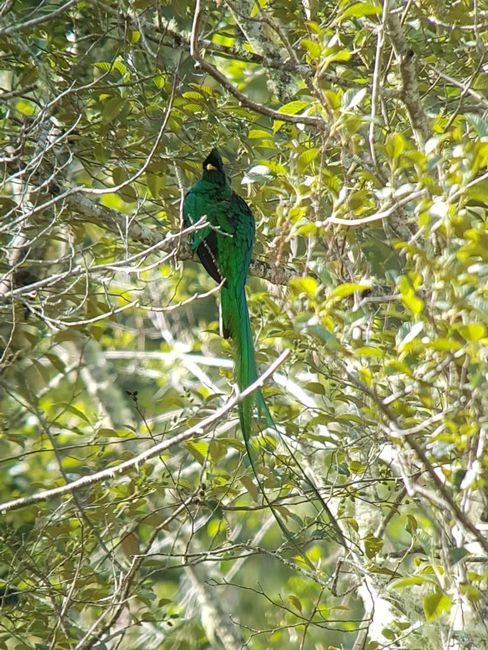
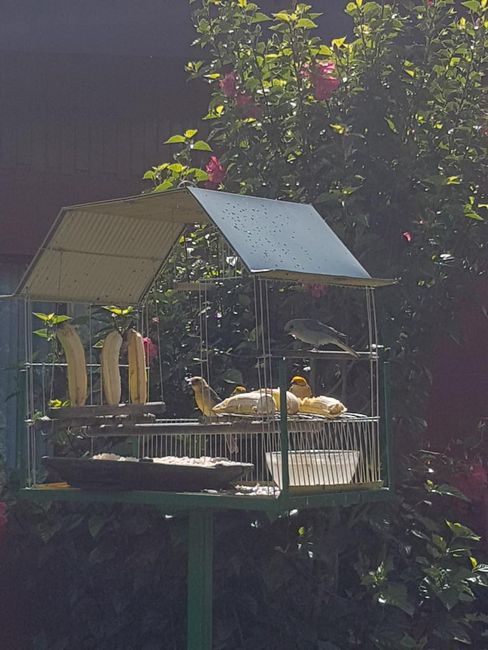
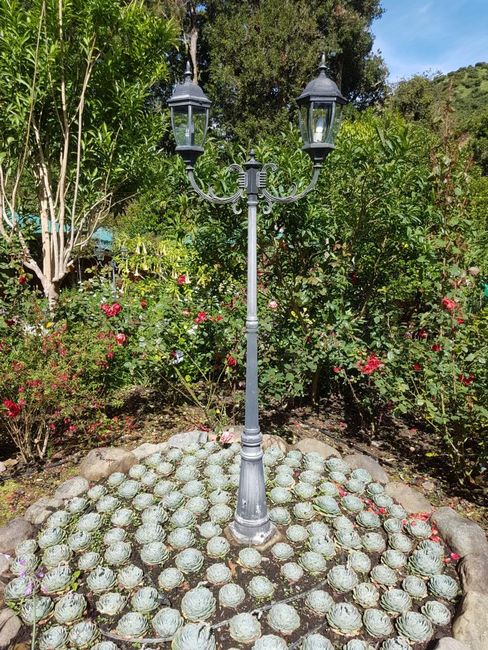
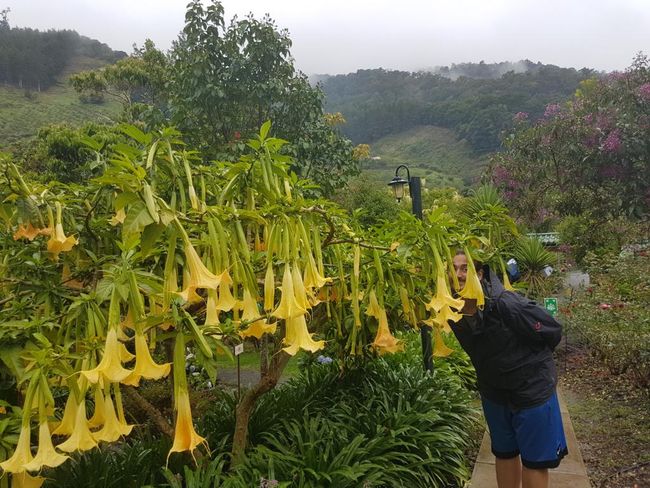
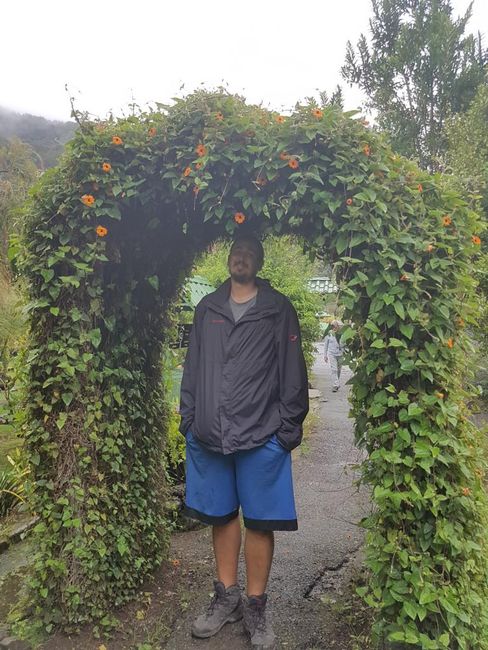
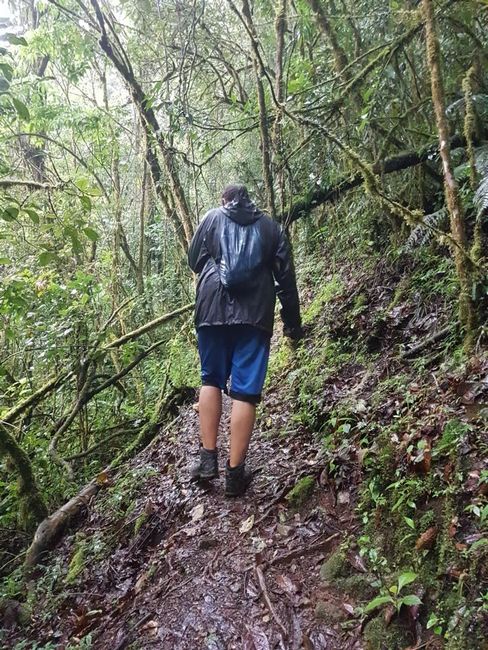
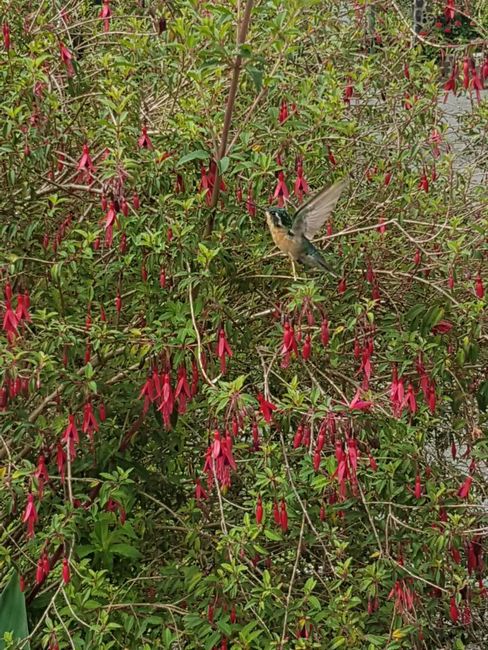
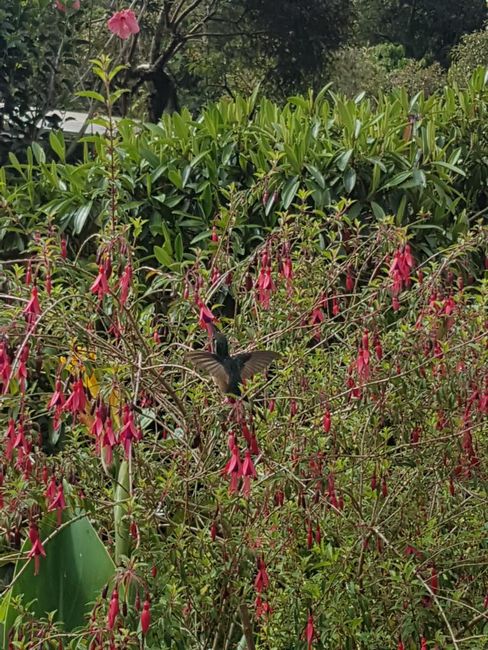
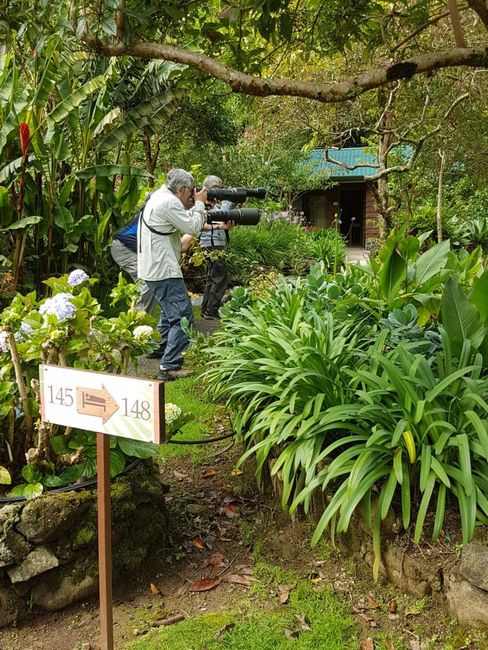
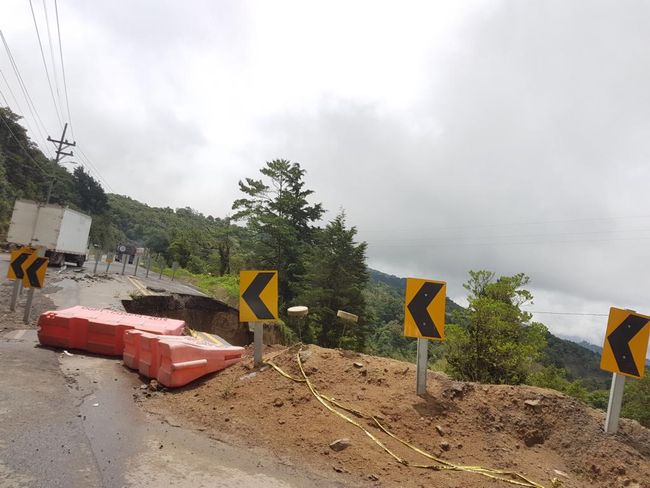
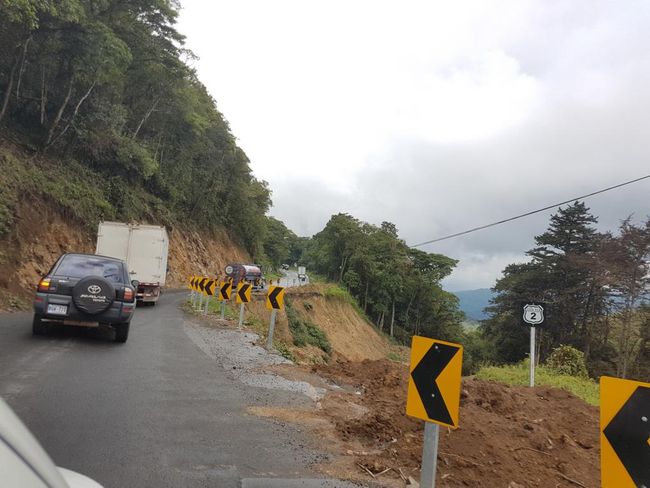
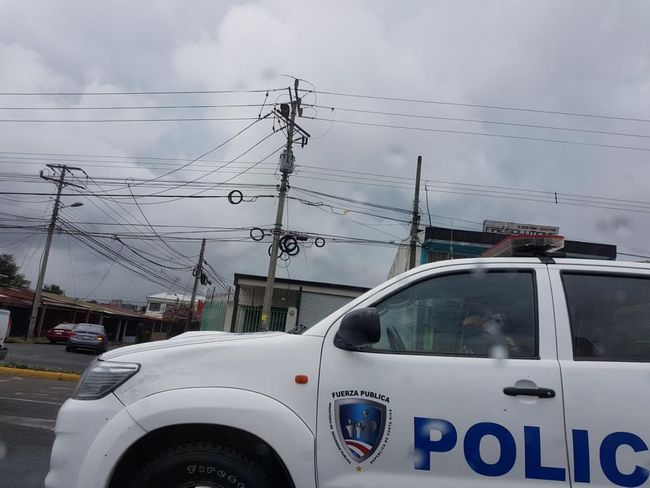
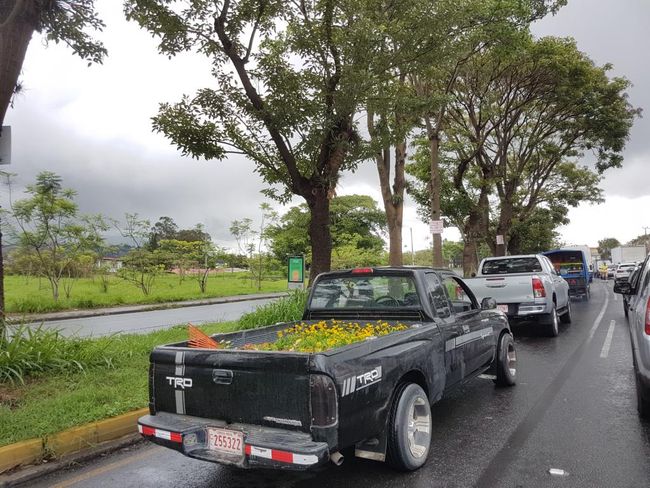
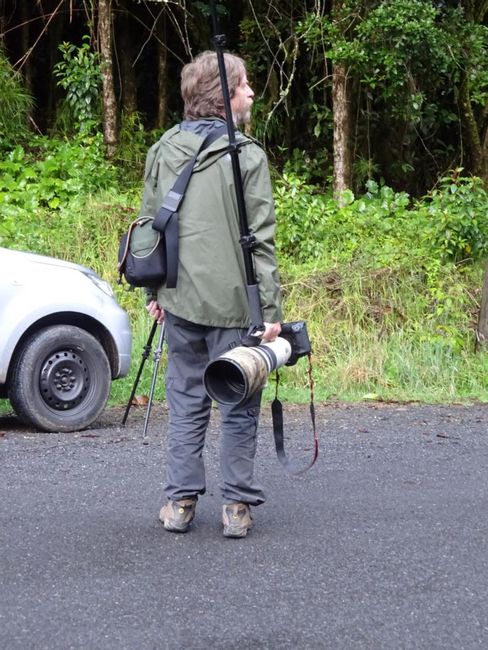
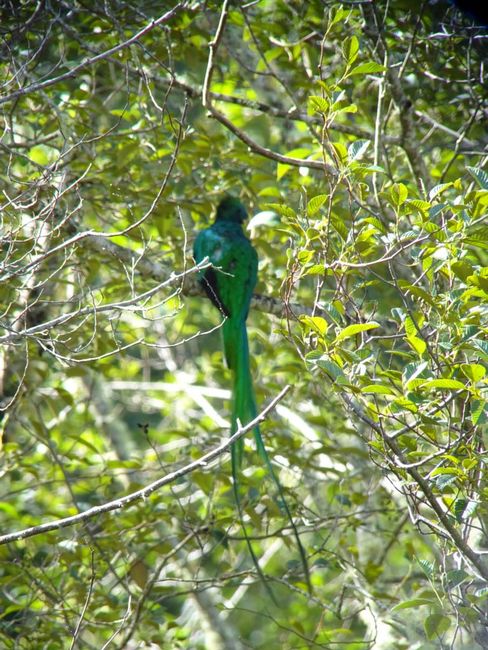
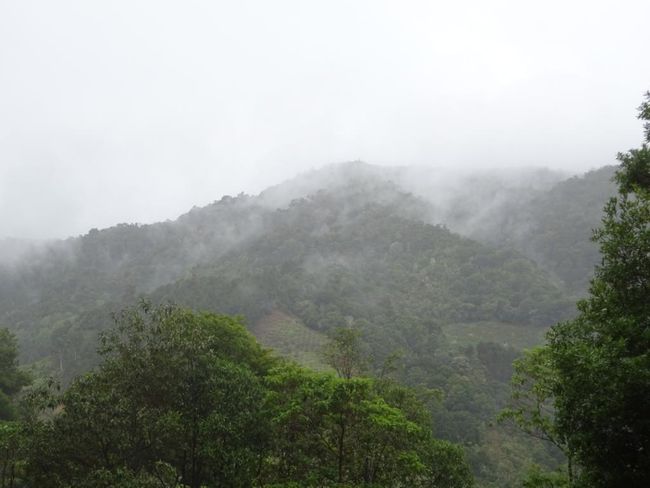
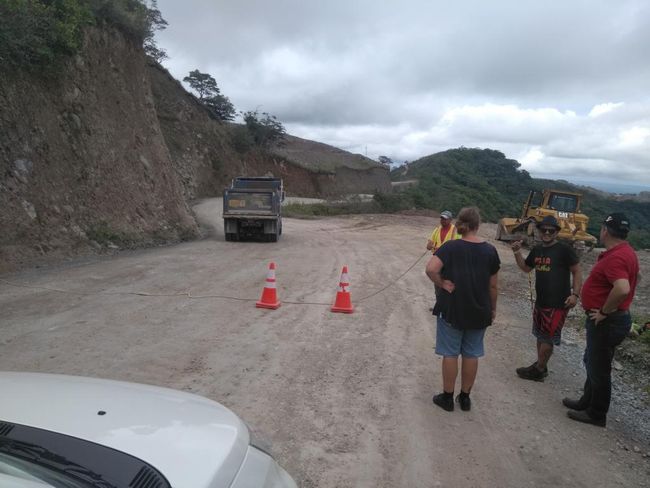
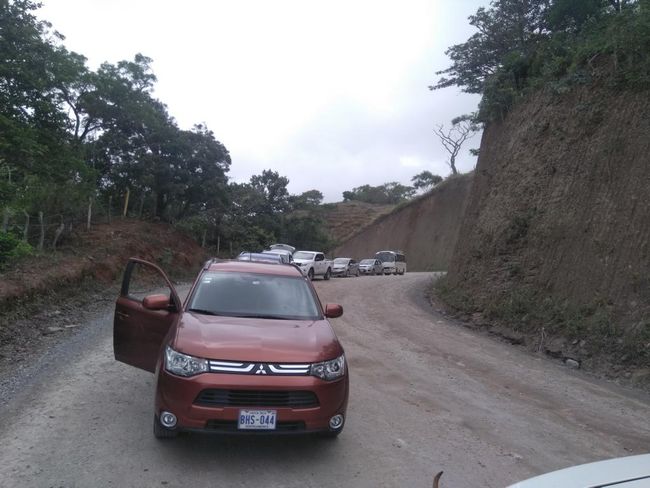
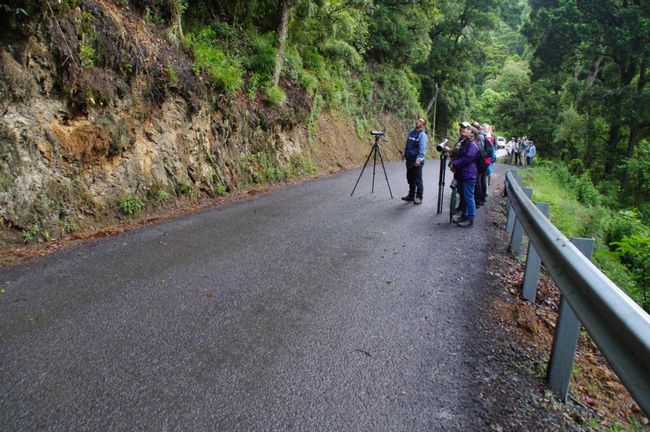
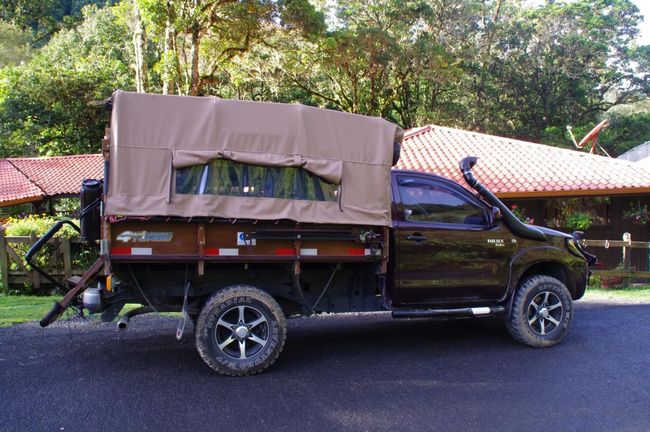
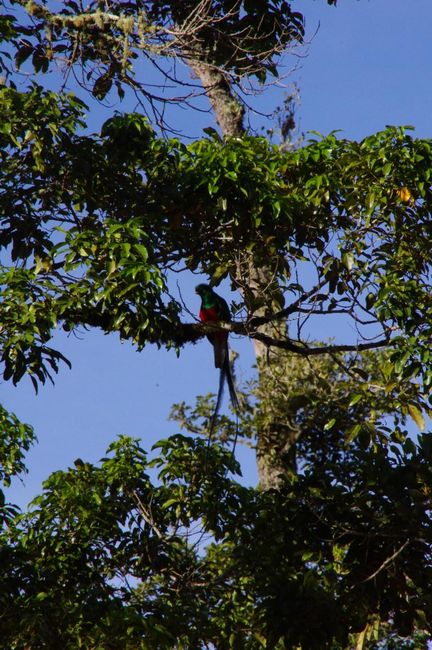
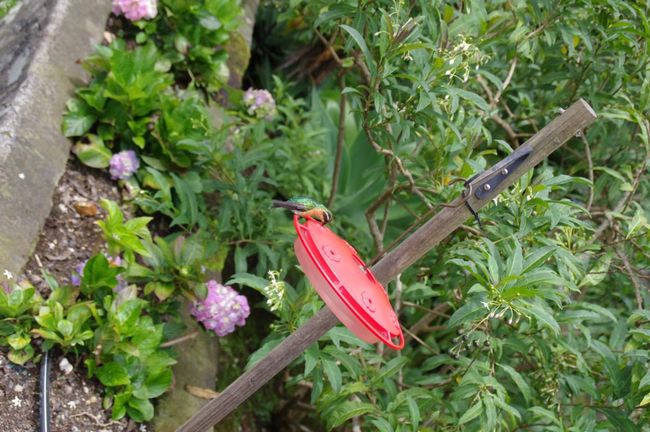
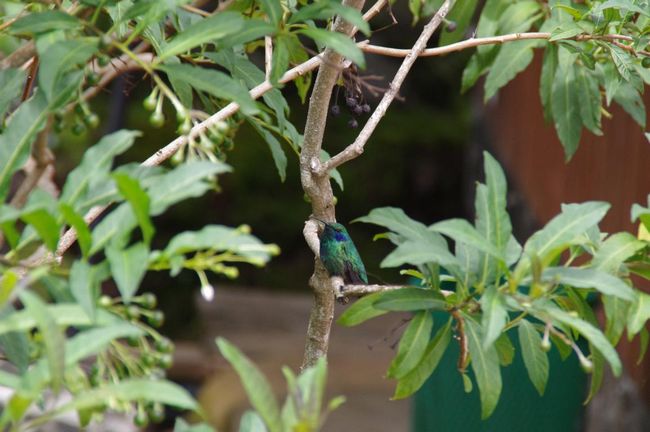
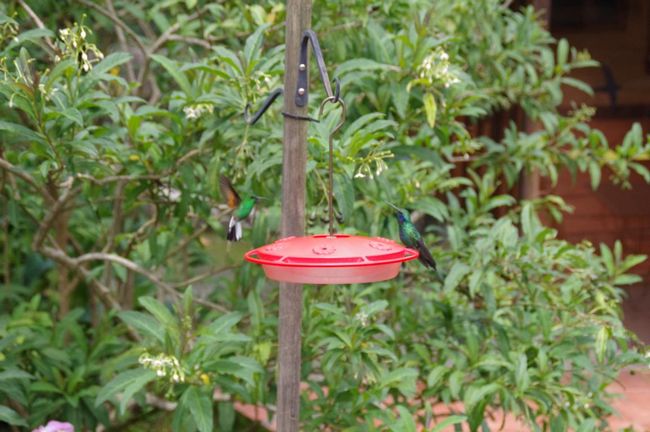
Agsubscribe iti Newsletter
Meanwhile, we were so determined to see the Quetzal that we decided to go all the way and drive to the park of the same name. This time, we wouldn't hold back and hire a guide. We also accepted that the park was on the other side of the country. After all, we had rented a car specifically for such insane undertakings. So far so good. Who could have known that this day would turn into an endless nightmare?
As soon as we set off and arrived at the edge of the village of Monteverde, workers were busy closing the road. Although we had noticed a mysterious sign by the roadside before, we hadn't paid much attention to it. On closer inspection, it turned out that there were roadworks on this road, and the road was temporarily closed several times a day for a few hours. (how ridiculous) When we asked the worker where else we could go through, he said it was no problem, the road was still open and we could pass. So we bumped down the same way we had come up. The joy, however, was short-lived. After a few kilometers of bumping along, we suddenly came to another roadblock. The worker there announced that we were too late, the road would be closed from 12:00. It was just 11:58! Since when are Latin Americans so punctual? It would not be opened again until 15:00, he said, either we wait or go back. This couldn't be true! We were probably the first car, but not the last, to be stuck before the blockade. By now, there were 7 cars and a bus. More people came and tried to persuade the worker to let us through. The worker didn't seem motivated and apparently didn't want to deal with the annoying bunch of people that we had become. After a few minutes of arguing, he called his boss, who also came. But he wouldn't listen either. They were unloading material on the construction site, so it was impossible to get through. Why did the first worker let us through at all, we asked? The two workers' walkie-talkies weren't on the same frequency, said the boss, so they couldn't communicate. Aha. One wonders what the walkie-talkies are actually used for. One of the men from our group said to another: eso es 100% Tico! (This is 100% typical Costa Rican!) The other laughed out loud. I asked the two if they were Ticos too? Yes, they said laughing. Very funny. But it was all in vain. We had to turn back.
So we bumped all the way back to Monteverde and inquired about an alternative route. And from then on, it only got worse. Luckily, we had the 4x4 drive. After an endless crawl on a rough dirt road, we finally reached the highway after about 1.5 hours. Thank goodness!
Finally, we made faster progress, but this joy didn't last long either. About 1 hour before San Jose, the traffic jam started. And it lasted...and lasted...and lasted...it was definitely not the best idea to drive from the coast to the capital on a Sunday afternoon, along with all the returning weekend vacationers. But here we were and unfortunately, we had to go through it. After what seemed like an eternity of rolling on the highway, we finally reached San Jose and fortunately made it through the city relatively quickly. Once again, I was relieved, unaware of what would come next.
What came next was a pretty narrow road into the mountains through dense fog. It was also dark by now. Joy. Either I crawled behind another slow driver or I was the traffic obstacle myself, alternating constantly. The route seemed endless, I was slowly running out of energy. Again, I was incredibly relieved when Jörg finally gave the signal to turn off the highway. And once again, I was unaware that the nightmare was far from over. Jörg said there were about 10 more kilometers. They would be the worst 10 kilometers of my life.
It was pitch dark. It was bumpy. It was now pouring with rain. The road was so narrow that 2 cars couldn't pass each other. On the left side of the lane, it went steeply downhill. A tight 180° curve followed another. This couldn't be true at all! It took us just under an hour to cover the 10 kilometers. We would probably have been faster on foot. But I was tired, I was scared, and I absolutely didn't want to end up as bird food at the bottom of the steep mountainside. So I crawled along...seemingly endlessly...curve after curve...hoping that no car would come towards me...until finally, finally the hotel appeared in front of us. Done! And just in time. The entrance gate would have been closed in less than an hour, and we wouldn't have been able to check-in anymore. Instead of the stated 4 - 4.5 hours, we ended up spending a good 9 hours on the road.
As soon as we got out of the car, a hotel employee asked us what we were doing here. Very friendly reception! Even the unfriendly man at the reception looked incredulous when we entered and said we had a reservation. It should be noted that this hotel was a jungle lodge, and a good one at that. It was probably the most expensive hotel we had ever stayed at, and yet it wasn't that expensive, as we had snagged a cheap last-minute deal and were also able to take advantage of my 10% frequent traveler discount. However, we probably didn't fit the general picture here.
The lodge mainly caters to hobby birdwatchers, bird watching is the big thing here. The rooms are arranged as row bungalows and all are surrounded by a colorful garden full of flowers and shrubs, whose colorful blooms are intended to attract birds. There were also various feeding stations on the premises to attract birds. The guests were mainly Germans and Swiss, and there was a real battle of equipment here. I had never seen such large camera lenses before, one bigger (and probably heavier) than the other, proper weapons of mass destruction of photo equipment were being lugged around here. The question "Who has the biggest one?" took on a whole new meaning here. We hardly dared to take out our modest camera and tiny binoculars in the face of this competition.
At some point, the receptionist found our reservation and reluctantly handed over the key. He managed to stammer out a "Welcome". But I didn't care about all that. Finally, I could rest a little after this horror day.
And that was urgently needed because the next morning our guide picked us up at 05:15 in front of the reception. Equipped with hiking boots and backpacks, we set out once again in search of the rare Quetzal! Well, we could have left the hiking boots and backpacks in the hotel because the bird search surprisingly took place along the road. However, we felt only moderately "overdressed" in the face of the fact that the other groups had shown up in full safari gear. First of all, all the groups gathered on the road and stared eagerly into the trees. The guides tried all sorts of tricks to attract a Quetzal. Our guide had an audio device with him, with which he could play the calls of the female Quetzals. Because it was the male bird that we all wanted to see. The red-green bird with its beautiful long tail feathers. It was supposed to be about 1 meter tall including the feathers, so not that difficult to spot, if it weren't mostly green. And indeed, we suddenly heard the chirping, a male specimen responded to the calls of our guide! I waved the binoculars around wildly and randomly searched the trees in the direction of the chirping. At first, I thought someone had tied a red plastic bag to the branches until I realized he was sitting there! The Quetzal! In a tree quite a distance away! And I was the first to see it! However, as soon as our guide brought his telescope into position, the bird flew away. Nevertheless, we had at least seen it briefly and were more than happy about it. The people from the other groups looked pretty disappointed because they hadn't been able to spot it in the short time amidst the green of the trees. Our guide jokingly told one of the groups: see you next year! One of the women almost started crying with disappointment and said: no, tomorrow!
But we didn't give up yet. The guides packed up the equipment, we got back into the cars, and drove to another location where we might see the birds. Surprisingly, we found ourselves in a restaurant parking lot right next to the road. What a joke. When we heard the words "bird watching" and especially the search for one of the rarest birds in Central America, we had actually imagined ourselves walking through the jungle. But no. Our guide explained that the Quetzals would preferably eat wild avocados, and such trees happened to grow right here next to the parking lot of this restaurant. Again, the equipment was set up, again the tape with the bird calls was played. This time it was Jörg who saw the bird first. Actually, we should have demanded a commission from the guides. The participants of the other groups didn't even bother to look for the bird themselves, but relied entirely on their guides. In the meantime, the guides had shown us a few other birds that had come into view. We were able to see a female Quetzal briefly as well, but the bird world is unfortunately unfair, the females are simply not as beautiful as the males.
There it sat. On a tree right in front of us. Not even 20 meters away. Direct view, clear and distinct even without binoculars. Beautiful. From today on, this would be my favorite bird. At first sight, I fell in love with the vibrant colors, the tousled little head, the sweet look, and the dreamlike long tail feathers. A few times, it flew back and forth between the trees, it was magical to see it fly. We couldn't tear ourselves away. Although it was a relatively costly undertaking to hire our guide just to spot a bird, it had the great advantage that there were only two of us in our group and we had the guide's telescope all to ourselves. After flying back and forth a few times, it sat on a branch for an eternity and simply preened itself. We were able to watch it extensively and take photos. It was truly incredibly beautiful and impressive. It was absolutely worth it for us to make the long journey, come here, and hire the guide. We enjoyed it immensely.
After the approximately 2.5-hour tour, our guide drove us back to the hotel where we first indulged ourselves at the ample breakfast buffet. On the one hand, it was really nice here, on the other hand, we were tired, and thirdly, I absolutely didn't have the energy to drive all the way back so soon, so we decided on the spur of the moment to extend our stay here for another night. After the hearty breakfast, we lay back comfortably in bed again and blissfully fell asleep, with the image of the Quetzal in our minds.
We had planned to explore the hiking trails on the huge hotel grounds after a short nap in the afternoon. But when we got up around noon, we unfortunately noticed that it was pouring rain outside. What a shame. We sat on the small, covered terrace of our room for a while, looked out at the garden, and waited for the rain to stop. It didn't.
At some point, we decided that it made no sense to wait. We also didn't feel like spending the whole day in the hotel room. And although we didn't quite fit the general image of well-heeled ornithologists in safari outfits, we are well-equipped travelers, so we set out in the pouring rain towards the hiking area. The hiking area consists of 3 trails, of which we completed 2. Unfortunately, there weren't many birds to see in the rain, but the forest was also quite beautiful and gleamed in fresh green.
After about 3-4 hours, we returned to the hotel completely soaked, warmed up, and spent a cozy evening in our room.
We decided not to eat at the hotel restaurant because the prices were really outrageous. And there were no great alternatives in the area either. As we had expected this, we went shopping on the way. Since Guatemala, we have been carrying a small electric stove and a pan with us. We bought them there at the time because we were tired of having to find a restaurant several times a day and because we wanted to eat something other than rice and beans or beans and rice again in between. And in Central America, not all hostels have a communal kitchen, so the stove was definitely a worthwhile investment. And so we could cook for ourselves in our fancy bungalow. The cleaning lady was probably very surprised when she saw our little Guerilla kitchen, especially in view of the fact that the hobby birdwatchers were unlikely to cook in their rooms.... 😊
The next morning, we set off and drove back to San Jose, where we would return the car and spend our last days in Central America.
Agsubscribe iti Newsletter
Sungbat (1)
Manuela
En super schöne Vogel.....😉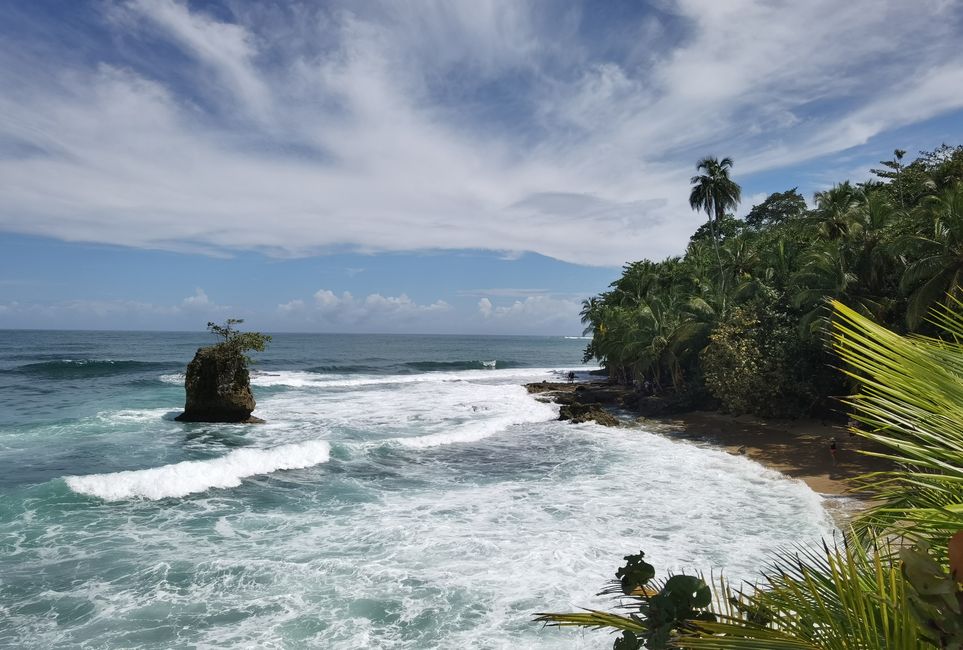
Dagiti report ti panagbiahe Costa Rica nga
